The International System: Recovery from COVID-19 amidst Great Power Competition
Assaf Orion, Shahar Eilam, Tomer Fadlon, and Rotem Oreg
Snapshot
Growing US-China competition between · Global disruptions, especially in the West · Surge in the digital world · decline in civil aviation, tourism, and energy sectors · Improved transatlantic ties with a new US administration
The International System: Recovery from COVID-19 amidst Great Power Competition
Assaf Orion, Shahar Eilam, Tomer Fadlon, and Rotem Oreg
Recommendations
Work with the US on Iranian nuclear issue · Develop economic relations with China in coordination with the US · Coordinate with Russia in the Syrian theater · Improve relations with Europe · Foster ties with Jewish communities
If 2020 is remembered for the outbreak of the COVID-19 pandemic, 2021 stands to be the year of the vaccine. Nonetheless, the coronavirus will continue to shape the world, and the likely scenario is a gradual decline of the pandemic, marked by sporadic outbreaks. In the second half of the year, the effects of the vaccine will be felt, the Biden administration will settle in, and there may be a new government in Israel. The international system remains polarized, even as each country focuses on its individual problems. The Biden administration faces many challenges, as it strives to heal America from within and restore its international status. The important strategic rivalry between the US and China will continue, and Asian economies will enjoy an advantage over the West in their exit from the crisis. Barring the outbreak of a significant conflict, the Middle East, except for the Iranian nuclear issue, will not be at the top of the international agenda.
Overview
2020 unfolded under the influence of three principal trends in the international system: increased competition between the United States and China for technological, economic, and strategic dominance; escalating international polarization, which complicates any attempts to resolve common challenges and issues in dispute; and uncertainty and expectations in advance of the United States elections. Yet from the beginning of the year, all these developments were overshadowed by the COVID-19 pandemic, which has generated severe global health and economic crises with pervasive, multidimensional effects.
In 2021 the coronavirus pandemic will continue to shape the world, including with new strains of the virus, and there will be stark differences between countries and regions regarding their respective ability to confront and recover from the crisis. The ongoing work on the vaccine will assume center stage, but it is likely that no pharmaceutical breakthrough will eliminate the virus entirely in the coming year; a more likely scenario is a gradual decline of the pandemic, marked by sporadic outbreaks. The world is looking at the change of administrations in Washington, in the expectation that the Biden administration will try to restore the status of the United States as a leading actor in the international theater and in multilateral frameworks. Many months will pass, however, before the new administration takes full shape and its policies and ability to implement them are sharpened, given domestic political constraints and difficult internal challenges. In any case, the strategic rivalry between the United States and China will continue to shape the dynamics of the international system, and is likely to intensify.
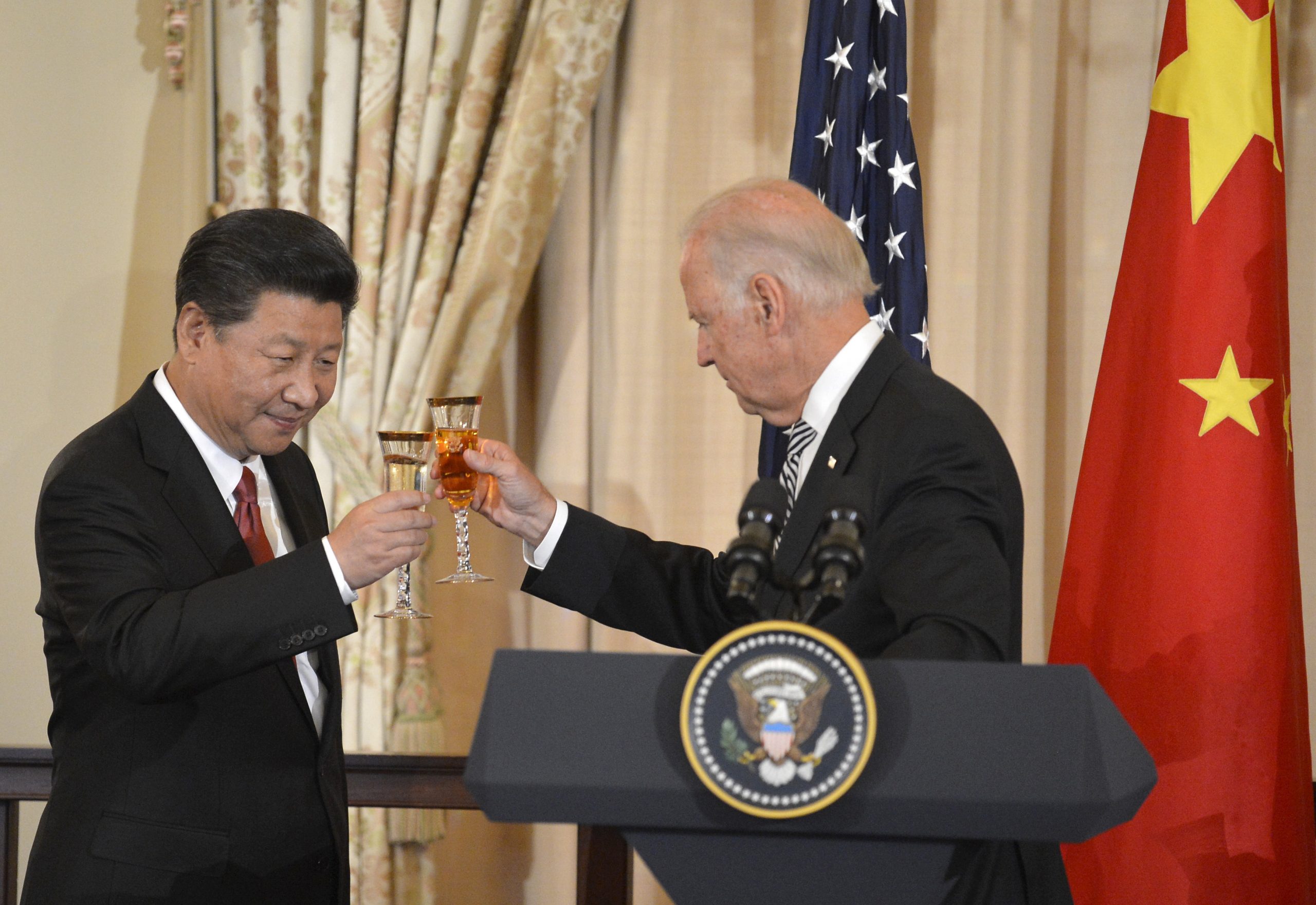
Competition between the United States and China will continue to shape the dynamics of the international system. Chinese President Xi Jinping and President Biden in 2015
Photo: REUTERS/Mike Theiler
Thus far, the global economic crisis has not evolved uniformly across geographic regions and economic sectors. East Asian countries, which have been relatively successful in containing the virus, experienced either slight growth or a minor decrease in GDP in 2020. In the Western countries, in contrast, the drop in GDP has been the steepest since World War II. The optimistic forecast for the coming year is of economic growth that will signal the beginning of recovery from the global crisis. Most Western countries, however, are not expected to reach their pre-pandemic GDP in the coming year, and repairing the damage will take a long time. The weaker and less successful countries are likely to be hit even harder, and their pace of recovery and ability to address crisis-related damages will lag behind. Social distancing rules will also continue to accompany the world in 2021, as will fiscal and monetary measures for coping with the fallout of the pandemic. The uncertainties in public health, the rise of Asia, and the difficulties in the Western economies have a major effect on Israel, whose principal trade partners and sources of capital are still the Western countries.
The behavior of the world’s capital markets in the past year showed two prominent trends, which are likely to continue in 2021. The first is the selective damage caused by the crisis. While companies in many sectors, such as tourism, civil aviation, and energy, have suffered steep declines, the technology sector has become a haven for investors and boosted the economic indexes. The second trend is accelerated adaptation to the new digital economy. Already in the first wave of the pandemic, many around the world adapted to the change in work patterns by transferring their activity to a digital environment. This trend is expected to continue, and will confer an advantage on countries and companies that are able to adapt themselves and are able to export technological and knowledge services. Looking ahead, technology and innovation will continue to constitute the global economic engine, requiring countries, organizations, and individuals to evolve and adapt in order to remain relevant.
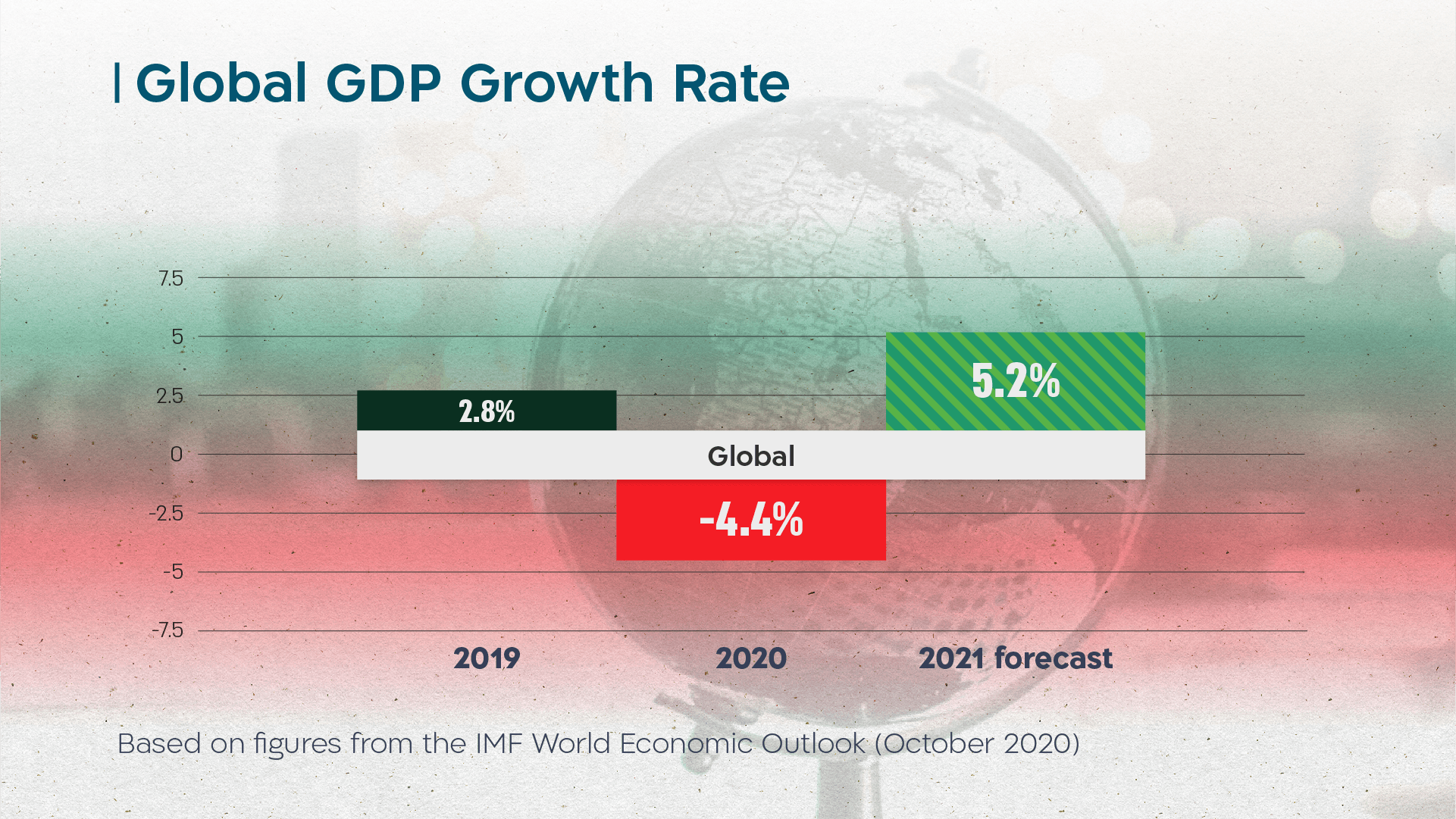
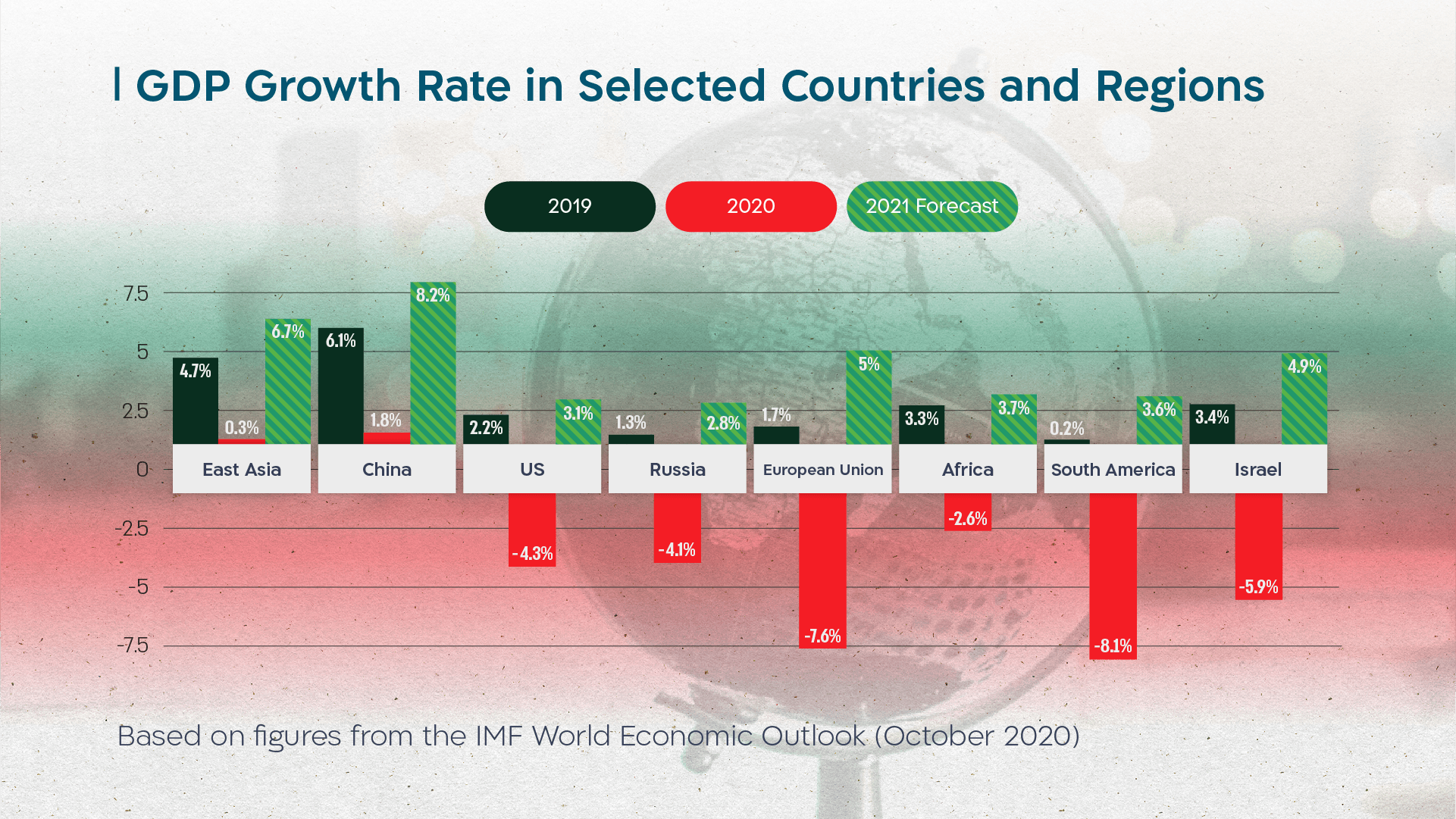
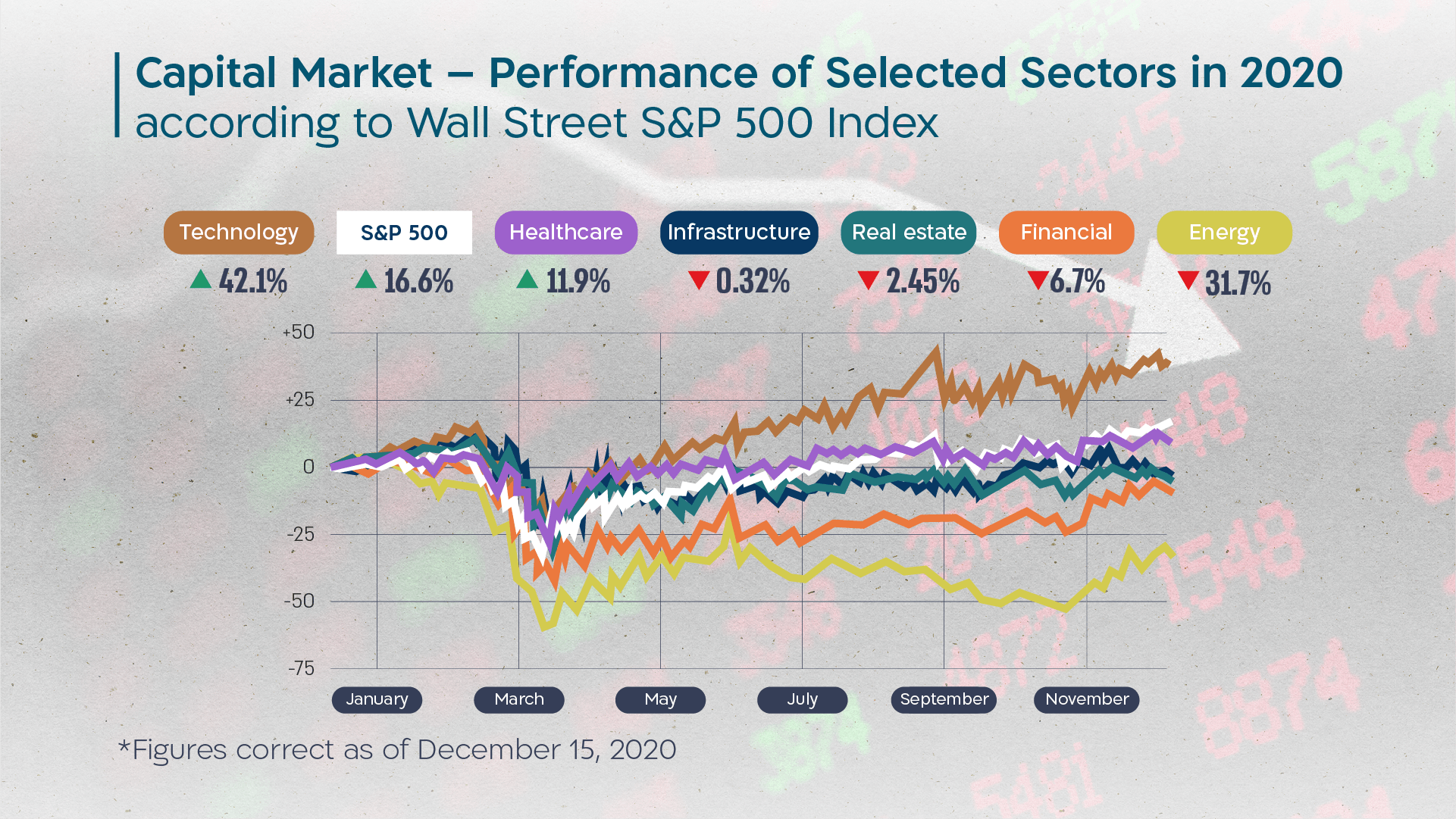
At the height of the global crisis and toward the end of President Trump’s term in office, the international system found itself polarized, divided, focused primarily inward on the internal problems of each individual country, and anticipating renewed clarity once the new US administration takes office. In the Biden administration’s first year in office, most of its attention and resources will likely be invested internally in an effort “to heal America,” addressing the COVID-19 pandemic, the economic situation, and social polarization in the United States. In contrast to its predecessor, the new administration will return to the traditional establishment modus operandi, and its policy on various issues is likely to be based on an orderly process of staff work and decision making. The administration will lead a change in direction vis-à-vis the international community: rebuilding relations with US allies in Europe and East Asia, reinforcing the American role in the global theater, and renewing multilateral cooperation. Likewise in foreign policy, special emphasis will be placed on the return of the United States to the international climate conventions. Indeed, the United States will take action to return to international agreements abandoned by the Trump administration, and will renew its cooperation with international institutions that were neglected over the past four years.
The multifaceted strategic rivalry between China and the United States is poised to continue in 2021. It will include accelerated technological decoupling between the two powers, accompanied by a mutual effort to prevent a military conflict between them. China, which recovered quickly from the conoravirus, will continue to benefit from rapid economic growth, and will step up economic activity and investments, mainly in its internal market and the developing markets. It will also, however, have to deal with growing responses around the world to its activism and intensifying strength. Together with the potential for closer cooperation between the two powers on trans-border matters, the deep fissures on disputed issues – economy and technology, intellectual property, human rights, Taiwan, nuclear weapons, and arms control – will continue.
Russia faces many difficulties in its internal theater. Any rise in its international status has stalled by the plunge in oil prices, instability in the post-Soviet region (Belarus, Kyrgyzstan, Moldova, Georgia, and the war between Azerbaijan and Armenia), and the repeated failure of efforts to restore the dialogue with the United States and the European Union. All of these accelerate Russia’s rapprochement with China, despite the risks and tensions between them. Russia will continue its activism in the international frameworks and attempt to wield influence through political warfare and cognitive means. It is also expected to attempt to expand its presence and influence in the Middle East to the best of its ability.
The Biden victory has brought some sighs of relief to Europe, which is looking forward to a renewed transatlantic alliance, while still facing the rift between the liberal proponents of globalization in the West and the rising nationalistic forces, especially in Central Europe. A change of leadership is expected following the retirement of German Chancellor Angela Merkel. Europe also faces a series of challenges on top of the political, ideological, and economic crises, all of which have been exacerbated by the COVID-19 pandemic – policy on refugees and immigration, the struggle against terrorism, the Brexit process, the revitalization of NATO, tense relations with Russia, the need for a united stance toward China, and policy on Turkey, including in the context of the Eastern Mediterranean Sea.
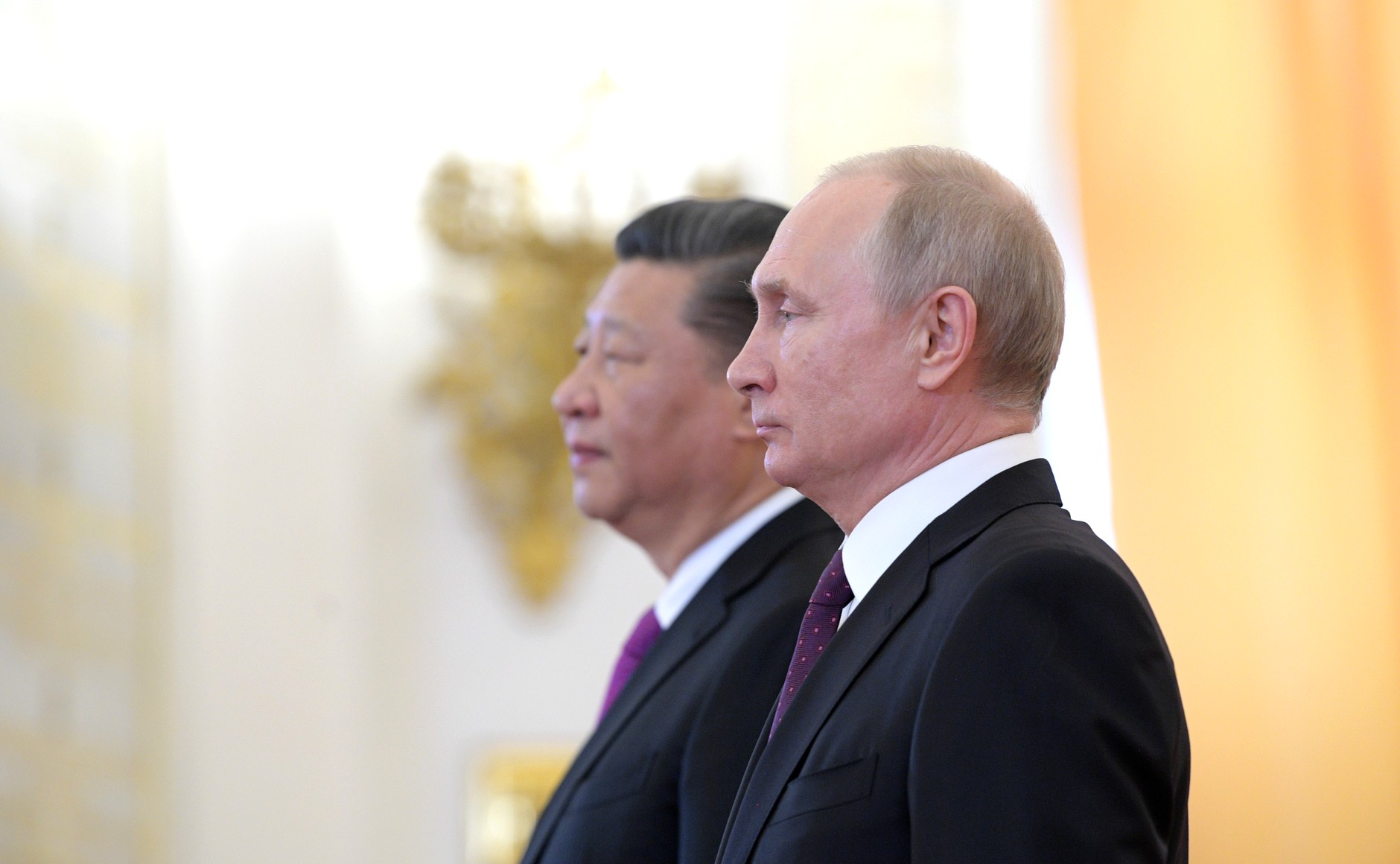
Russia’s internal and external difficulties bring it closer to China. Russian President Vladimir Putin with Chinese President Xi Jinping
Photo: Kremlin
The Middle East
Although the United States has sought for many years to reduce its involvement in the Middle East in order to devote most of its attention and external resources to regions that it regards as more important, specifically East Asia and the Western Pacific, the Middle East is still a focus of interest for the international system, given the challenges the region poses: proliferation of nonconventional weapons, political instability, refugees, and terrorism loom against the background of abundant energy resources, which are especially important to a growing Asia. The Iranian nuclear issue is likely to return as an international priority, given the Biden administration’s aim of achieving an improved nuclear agreement based on the JCPOA, Iran’s wish to have the sanctions against it rescinded, and the intention of Russia, European countries, and the Gulf states to play an important role in the dialogue between Washington and Tehran. In Israel’s northern theater, Russia will continue to be a key player. Despite the growing constraints (headed by the intensifying friction with Turkey and competition with Iran over reconstruction in Syria), Russia will maintain its status as a party promoting stability and order.
At this stage, Israel’s two main theaters of conflict – Lebanon and the Gaza Strip – are not high on the international agenda, and especially not where a long-term arrangement and demilitarization are concerned. Military escalation, however, could well change this. The Biden administration will likely try to continue the momentum toward normalization between Israel and countries in the region – one of the Trump administration’s most salient achievements – and to include elements in the Palestinian context, which was sidelined on the international agenda under Trump, but is expected to return to the agenda, although not to center stage. This will consist mainly of attempts to renew the dialogue between the parties and promote confidence-building measures (such as resuming economic aid to the Palestinian Authority and reopening the Palestinian embassy in Washington), not necessarily by launching a renewed political process, given the assessment of the slim prospects of success.
For the diaspora Jewish communities, the socioeconomic crisis in the West and the political polarization and extremism are liable to aggravate the varieties of anti-Israeli and antisemitic phenomena (right wing extremist, progressive Marxist, Islamic jihadi), and to undermine their sense of safety. On the other hand, the growing challenges and the return of the Democratic Party (supported by most Jews in the United States) to the White House has the potential to bolster cooperation between Israel and diaspora Jewry. Normalization between Israel and Arab countries is also likely to generate potential for cooperation and religious toleration, and to serve as a counterweight to the influence of Islamist forces (Turkey, Qatar, and the Muslim Brotherhood) in the region and worldwide.

A rise in antisemitism. Swastika in a Jewish cemetery in France
Photo: Nicolas Roses/ABACAPRESS.COM
Policy Recommendations
The COVID-19 health and economic crisis will head the global agenda in 2021, in face of likely repeated outbreaks of the virus and hopes for widespread vaccination during the year, followed by economic recovery. At this stage, East Asia is at a better starting point than the West for emerging from the crisis. The situation of the Southern Hemisphere countries, whose health and economic infrastructure was inferior to begin with, is likely to become even worse.
The international dynamic is expected to continue to be polarized and marked by rifts, and the aspiration to solve global challenges through multilateral channels will be limited by the major powers’ attention to internal challenges (headed by healthcare, the economy, and social fissures), and by the Sino-American rivalry. This is expected to focus mainly on competition for technological-economic dominance (communications infrastructure, artificial intelligence, and big data), as well as military supremacy. The technology-intensive sectors are accordingly expected to maintain their status as the global economic engine. At the same time, the change in approach in Washington under Biden and the potential for a renewed transatlantic alliance are likely to create areas for cooperation between the West and China, among them healthcare and climate, along with the disputed issues.
Barring a clash requiring intervention and the investment of resources, the Middle East is likely to remain suspended between its low priority on the global agenda and its ability to attract attention through crises and threats. The long-term trend spells pushing the region to the margins of the international agenda, except for the Iranian issue and the efforts that will be devoted to renew the negotiations on the nuclear agreement. The chances of renewing the political process between Israel and the Palestinians, which will require massive political input, are still poor, and international interest in Israel’s main conflict theaters will be very low, assuming there is no conflagration.
It therefore appears that the coming year will be marked by a gap between urgent imperatives and the lagging reality. Many obstacles will be removed, if at all, only in the second half of the year – once the effects of the vaccine emerge, which will make it possible to begin eradication of the pandemic and the recovery from the crisis; once the new US administration settles in and begin its activity; and once Israel attains political stability, potentially after the forthcoming elections.
In view of the trends described above, it is recommended that Israel prepare for a new US administration that has a different worldview than that of its predecessor, strive to coordinate policy with the Biden administration, take advantage of opportunities (pressure on Iran and Hezbollah, normalization), and reduce risks and resolve potential points of dispute and tension in relations between the two countries (the nuclear agreement with Iran, economic relations with China, and the Palestinian issue). Israel must rebuild relations with the Democratic Party and the Jewish community in the United States, despite the disagreements, while maintaining good relations with the Republican Party.
Furthermore, Israel should adapt infrastructure and policy to the strategic rivalry between the major powers and the global economic changes; strengthen its relative advantages (technology and innovation); invest in infrastructure needed to preserve these advantages (human capital, communications infrastructure); foster a business environment attractive to foreign investments (from East Asia, the Gulf, and the West); and form an “innovation alliance” with the United States.
Along with bolstering its already close relations with the United States, with an emphasis on technology, and expanding the strategic dialogue on Asia, Israel should continue its ongoing dialogue with China, strive to advance its interests vis-à-vis Chinese policy (e.g., in international frameworks) within the existing constraints, and strengthen Israel’s connection with Asian countries. Israel should learn from the experience of other countries with China, and devise a policy that balances between taking advantage of opportunities and managing risks, while increasing its knowledge about modern China.
In addition, Israel would do well to:
- Rebuild and reinforce relations with the European Union and the Western countries on the continent, and prepare for the post-Merkel era. Israel should continue its effort to renew the political dialogue with Brussels; recruit support from European countries against threats by Iran and its proxies, and against challenges by Turkey; raise ideas for initiatives that will integrate Europe in the Eastern Mediterranean; include the Mediterranean and Gulf dialogue in the NATO framework; and include European input on the Palestinian question, while leveraging normalization between Israel and Gulf states.
- Adapt and improve Israel’s diplomatic mechanisms for engaging with the international forums and multilateral frameworks, which are expected to play an expanded role in the global agenda (e.g., climate, healthcare, arms control).
- Include the issue of diaspora Jewry in decision making processes in Israel, and create a staff and consultation mechanisms; classify relations between Israel and the diaspora as a national mission centered on education, meetings, and dialogue, together with joint attention to challenges (identity, continuity, affiliation with Israel, and the battle against antisemitism).


